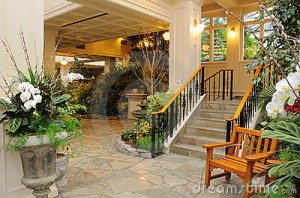An indoor garden can be a relaxing sanctuary for you to unwind from life’s daily stresses using your favorite plants and flowers. Quite a few home gardeners can continue to grow their fruit and vegetables in the house once the growing season has stopped outside, when they are growing plants which are particularly susceptible to disease or if their backyard is seriously affected with insects, disease, or other problems.
An indoor garden will help you to grow your crops while they are out of season, but you will need to regularly monitor things such as the temperature, light-cycles and a few other things to properly grow them inside.
Here is a list of 5 things that you need to know when starting an indoor garden. Lighting, soil, humidity, temperature and air flow are the main key elements in creating an indoor garden and will keep your plants growing strong and staying healthy.
Although house plants typically need a small amount of sunlight to flourish, plants that are generally grown in the backyard garden such as flowers, herbs and vegetables generally will need to have at least six to eight hours of direct sunshine every day to successfully blossom or bear fresh fruit. Indoor grow lights can act as a sunlight replacement if the plants are not getting enough natural sunlight. Plants mainly use the red-colored and blue wavelengths of the spectrum of visible light.
Vegetation also needs to have dark time together with the light cycle to keep them healthy. This dark time can be as little as four hours. Using a timer on the lights will ensure that they are getting enough light and dark time.
The temperature is probably the easiest factors to manage with your indoor garden. The temperature is typically not a problem with most indoor gardens because most people keep their houses warm enough for the plants. Plants that are either to hot or cold will be at an increased risk of becoming infected with insects and diseases. Because of this, the temperature needs to stay between 68 and 72 degrees.
The soil for the container garden is also very important. The soil inside a pot will normally dry out more rapidly compared to the garden soil so it needs to be checked regularly. Common dirt will rapidly become compacted if it is used so you need to avoid using it, instead use a soil mixture. Whenever using a soil mixture, it is far better to use a light soil blend to allow for superior drainage and air flow throughout the root system. An excellent soil blend for the majority of indoor gardens is made up of one part sand, one part peat moss, two parts loamy soil and a half part of cow manure.
Air circulation is another important factor to consider when starting a container garden. You will need to make certain that the container garden is located in a place that has excellent air flow. This helps keep the temperature stable, and prevents insects and diseases from infecting the plants.
Humidity is another essential thing to consider with regards to keeping your indoor plants and flowers strong and healthy. The best humidity ranges for plant life range from 30 % to 60%. Keep in mind that with higher levels of humidity, the greater the chance of specific plant diseases to develop such as mildew, mold and fungus. When relative humidity is under 50%, use warm water to mist the area around the vegetation until beads of moisture form on the leaves. Excessive humidity levels above 70% need to be vented out of the growing area using fans.
News About Indoor Garden:
Indoor gardening
Indoor Garden Expos
NYC Indoor Garden Wedding

